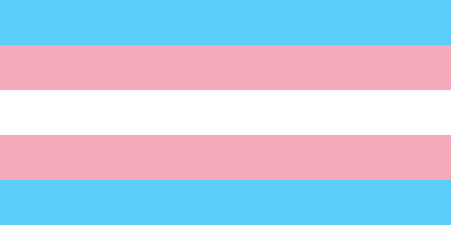International Trans Day of Visibility
Juan Johnson - 31 March 2023
There is a staggeringly high amount of trans rights discourse in mainstream media, yet 1% of adults currently describe themselves as transgender, non-binary, non-conforming, or “in another way” rather than as either man or woman (World Economic Forum 2021). While the current debate on trans rights circulates on media platforms, critical components of a trans person’s experiences such as seeking out community, goals of gender euphoria and chosen family sometimes go unsung. Self-proclaimed radical feminists find themselves in agreement with more conservative individuals in that they both oppose the notion that ‘trans women are women; trans men are men’. There needs to be a focus on the humanity of trans people.[a]
Community and kinship are powerful and pertinent components of the trans community and of trans people themselves. People who share the same identity can be bonded in ‘obscure and emotional’ ways ‘which [are] more powerful the less they could be expressed in words’ (Conner, 1993, p. 383). There is a deep connection between individuals who experience walking through the world as people of trans experience. With a small percentage of the world’s population who identify as transgender or non-binary, these communities and connections are important. A sense of belonging comes naturally to human beings, we crave to belong in groups. Cole Banton articulates that although every trans person’s journey is unique and different, trans people are driven to create spaces for themselves through a collective feeling of alienation from social society on the basis of their gender identities. Banton further asserts that the trans community is important and life-saving and sometimes a replacement for biological family relations – there is a ‘sense of feeling at ease with other trans people’. Banton communicates sentiments that a large number of trans people feel in relation to the community. Not only do trans spaces provide protection, but they are a nexus of intense kinship that produce waves of cultural shifts.
Ballroom is a prime example of such a community, it is a carefully curated space. Emerging amid the Harlem Renaissance in a response to a staunch campaign by the Black Church to rid New York of its LGBTQ residents; black trans women created a space to empower the community. Ballroom’s system of “houses” and the use of terms “brother”, “sister”, “mother” and “father” show the importance of the ballroom community in the lives of trans people, with chosen families taking the place of biological ties where needed. Typically known for the production of “voguing”, a widely known dance form, Ballroom is a community and a space that steps outside of the binary across gender, relationships, and sexuality with contributions to popular culture since its inception. Trans-friendly spaces are born from resistance, from being outcasts to influencing mainstream works such as “Renaissance” by Beyonce. Ballroom has grown internationally from an underground scene in Harlem to multiple scenes from London to Tel Aviv, and the need for such trans-inclusive spaces around the world is clear. No community or group is without its internal politics, but Ballroom focuses on creating a space that celebrates individuals in all stages of transition.
Those in Ballroom resist mainstream notions of gender and sexuality, it dwells within the centre of the debate on trans rights. Simone Weil, a feminist philosopher, discusses the notion of human rights and proposes a focus on human needs. Weil argues that there is something about human beings that make them sacred that is divorced from personal characteristics. In relation to trans people, it is important to address the core needs of human beings outside of the basic necessities of food, water, and shelter. Trans people need family, stability, recognition of existence, safety and more components to life that ensure not only survival but a good quality of life. With policymakers debating on various aspects of trans lives, the needs of trans people should be at the forefront of policymakers’ minds when voting on policy.
Ultimately, International Trans Day of Visibility celebrates the lives of all trans and gender-nonconforming people – it’s a nod to trans history and plays a part in maintaining society’s push towards a more inclusive world for trans people.

